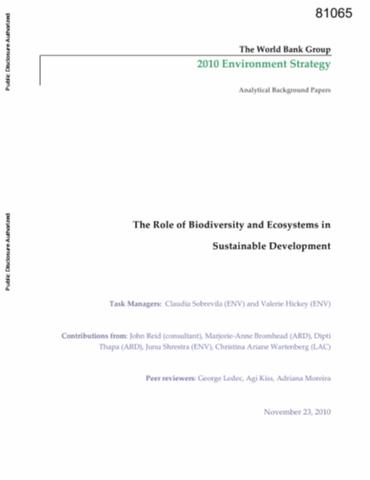Resource information
Biologically diverse ecosystems in countries served by the World Bank provide an array of valuable economic services. While the benefits of conserving ecosystems frequently outweigh the costs, conversion of these ecosystems to other uses occurs anyway, because many ecosystem benefits are of a public good nature, without markets that would reflect their real value. The objective of this paper was defined at a Concept review meeting held on December 2009 and is to increase the understanding on how biodiversity is incorporated in a development agency such as the World Bank Group (WBG) and how the WBG can enhance its role in biodiversity and ecosystems protection and management as a key ingredient to reach development sustainability. In order to define a reasonable strategy to prepare this paper, two approaches were used: the first was to carry out background and analytical studies, and the second was to consult with a wide range of stakeholders including Bank staff, Non-Governmental Organizations (NGOs), and indigenous groups. Biodiversity provides many instrumental benefits, from food and fuel to recreation. But even where biodiversity is not immediately instrumental, it represents global public goods that must be protected, if only for their potential value in the future. The Global Environment Facility (GEF) has been the mainstay of grants implemented by the Bank ($1.4 billion) for biodiversity conservation and management, but the Bank has itself committed $2 billion in loans and has leveraged $2.9 billion in co-financing.


